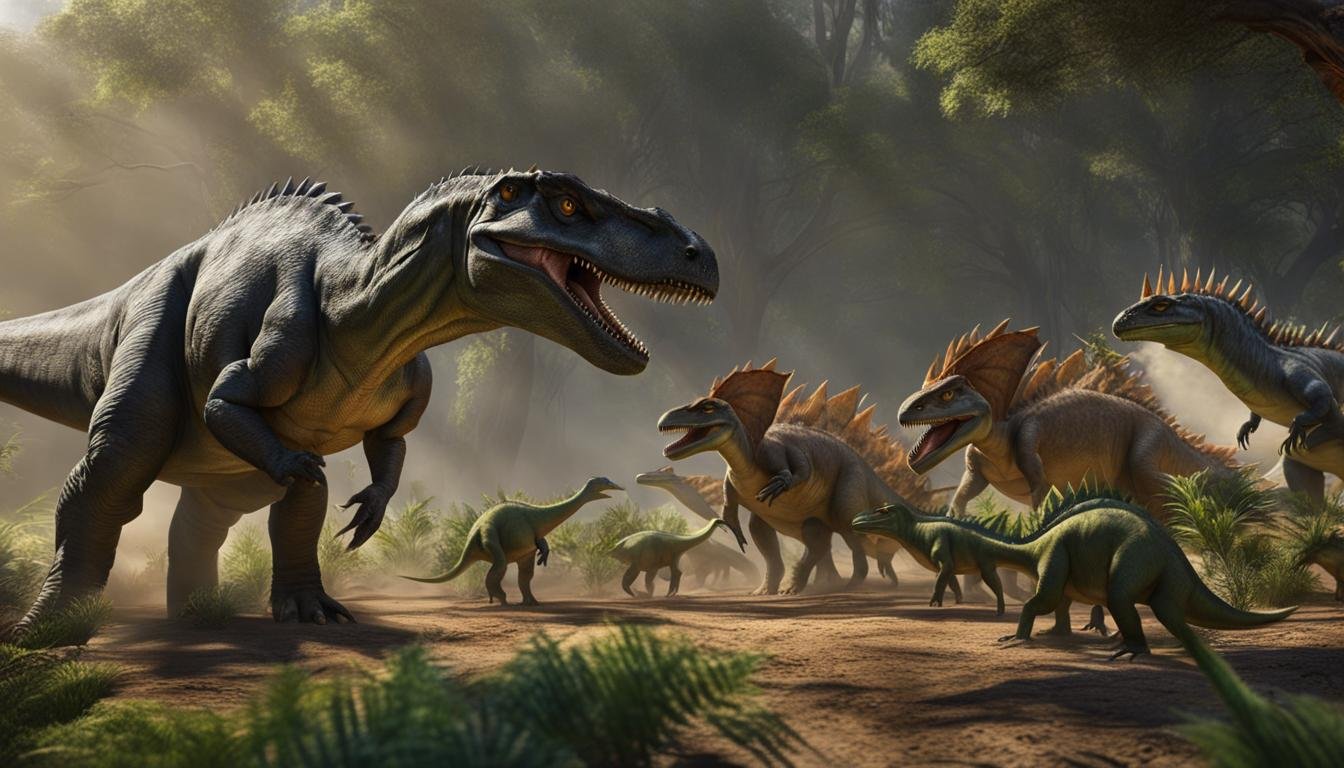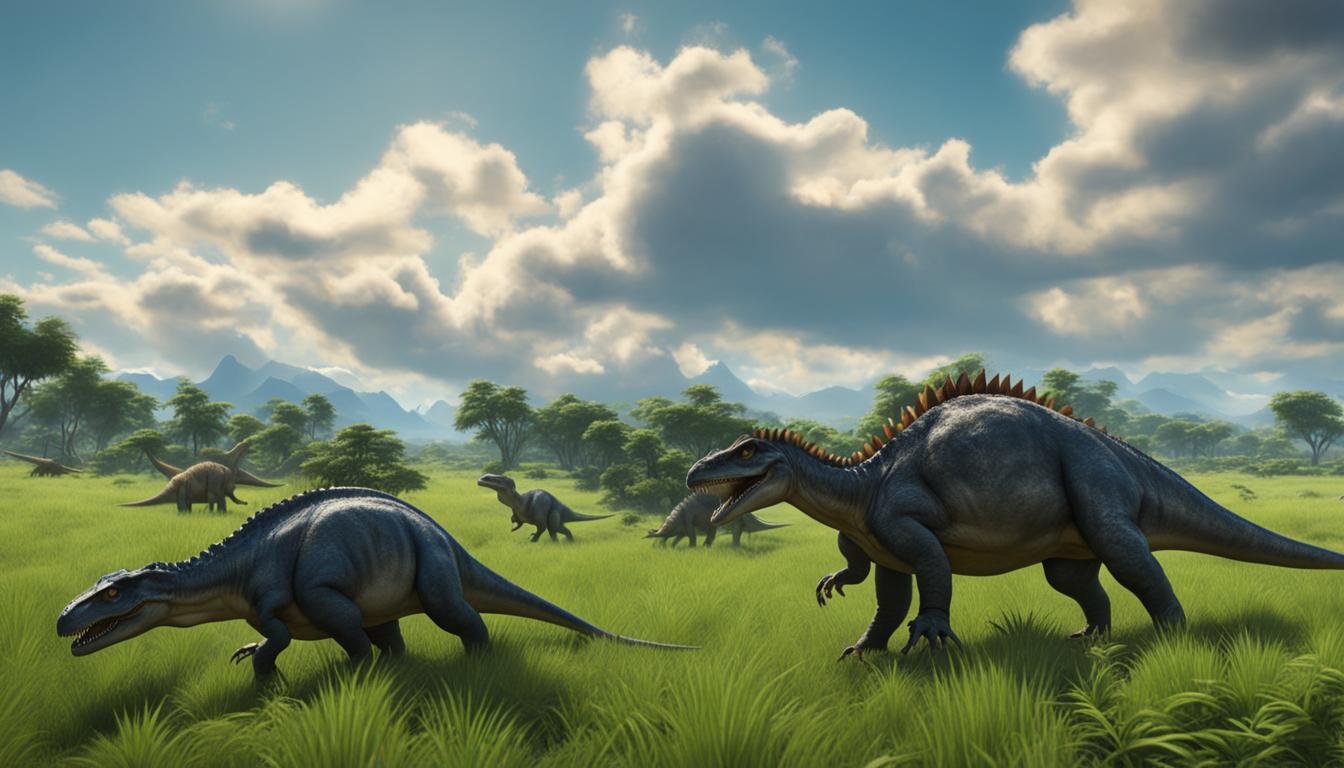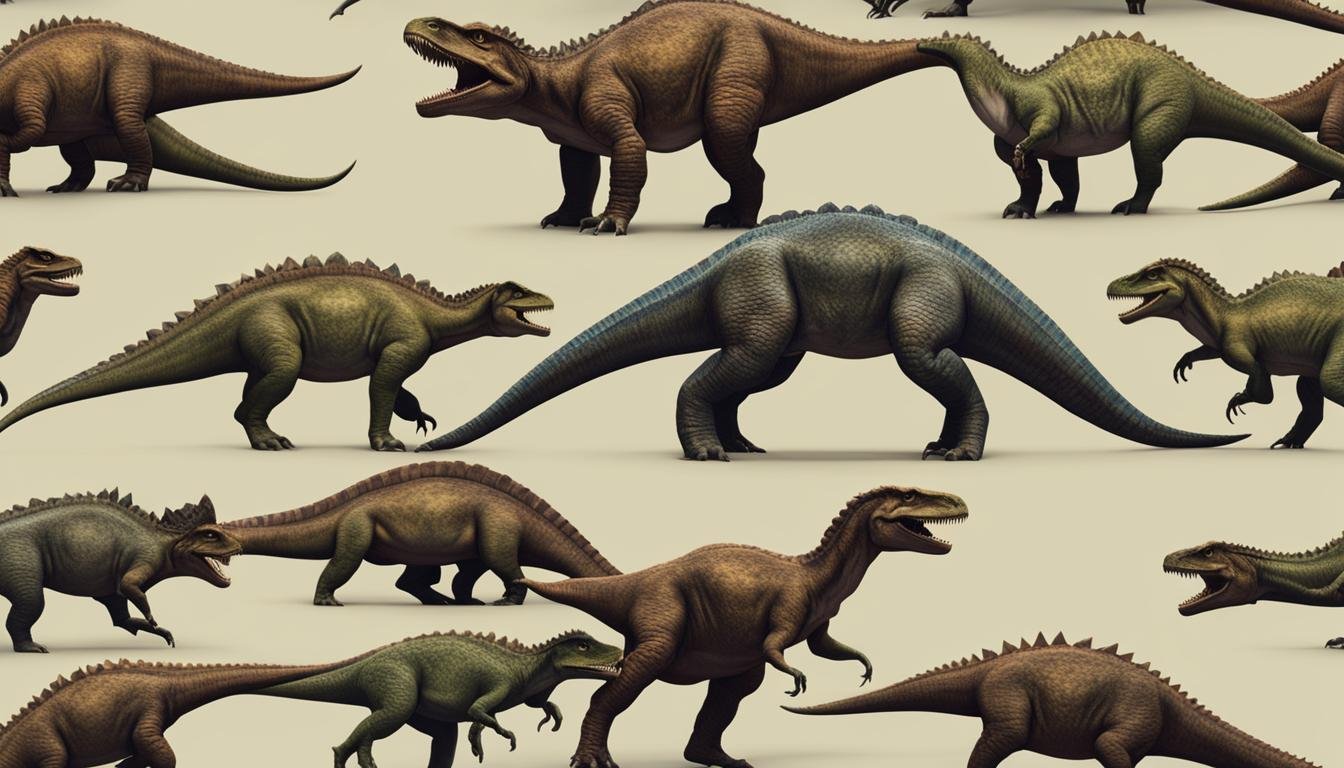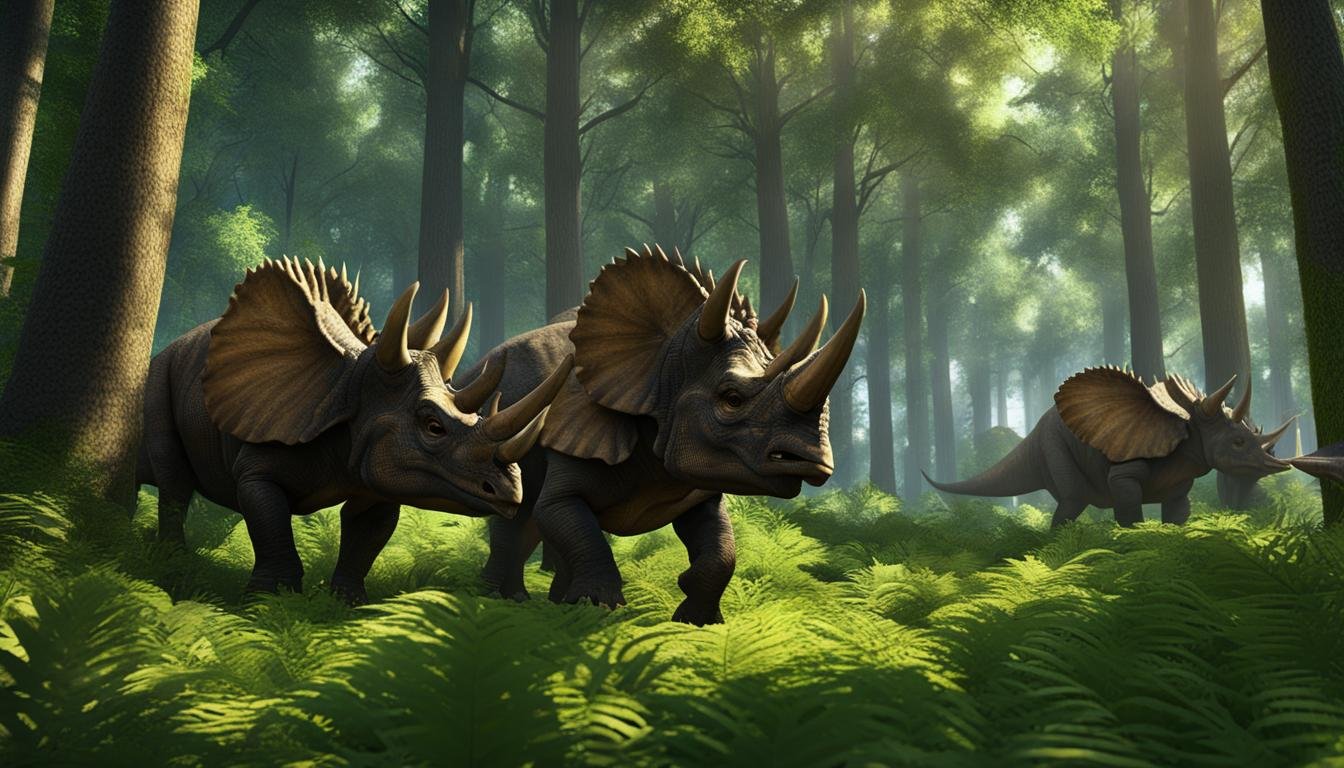Did you know that dinosaurs, those magnificent and mysterious creatures that once roamed the Earth, may have been more intelligent than we previously thought? Recent studies conducted by researchers from Lund University have shed light on the cognitive abilities of dinosaurs, particularly in relation to social learning and group dynamics. These findings challenge our understanding of dinosaur intelligence and provide fascinating insights into their behavior and evolutionary history.
| Key Takeaway | Detail |
|---|---|
| Social Learning in Dinosaurs | Dinosaurs may have demonstrated social learning and cognitive behaviors. |
| Origin of Visual Perspective Taking | Visual perspective taking, a form of social learning, is believed to have originated in the dinosaur lineage. |
| Comparative Study of Brain Structures | The study involved comparing the brain structures of alligators and palaeognath birds to trace the evolutionary origins of visual perspective taking. |
| Challenges in Estimating Dinosaur Intelligence | While estimating dinosaur intelligence is challenging, paleobiological studies offer valuable insights. |
| Group Dynamics and Behavioral Complexity | Observations of group dynamics and behavioral complexity in dinosaurs suggest they had a level of intelligence comparable to modern mammals and birds. |
Evolutionary Origins of Visual Perspective Taking
The research conducted by Lund University aimed to investigate the evolutionary origins of visual perspective taking in dinosaurs. By comparing the brain structures of alligators and palaeognath birds, the study found that alligators do not demonstrate this behavior, while all tested bird species exhibited visual perspective taking. This suggests that visual perspective taking likely originated in the dinosaur lineage, potentially even earlier than in the earliest dinosaurs.
One of the key factors contributing to the emergence of visual perspective taking in dinosaurs is their superior vision compared to most mammals. While mammals historically relied on nocturnal adaptations, birds had evolved exceptional visual acuity. This adaptation allowed them to perceive and interpret their surroundings in greater detail, leading to the development of cognitive abilities such as visual perspective taking.
Visual perspective taking in dinosaurs represents a significant behavioral adaptation that enabled them to enhance problem-solving skills, communication methods, and social interactions. This ability likely played a crucial role in their cooperative behavior and learning mechanisms. By understanding and following someone else’s visual perspective, dinosaurs were able to navigate their environment more effectively and coordinate their actions within groups, which would have provided them with a distinct advantage for survival and adaptation.
Comparison of Visual Perspective Taking in Alligators and Palaeognath Birds
| Alligators | Palaeognath Birds | |
|---|---|---|
| Visual Perspective Taking | No | Yes |
| Brain Structures | Not indicative of visual perspective taking | Supportive of visual perspective taking |
| Evolutionary Lineage | Crocodile lineage | Dinosaur lineage |
The comparative analysis of alligators and palaeognath birds provides compelling evidence for the evolutionary origins of visual perspective taking in dinosaurs. This research expands our understanding of the cognitive abilities and adaptive behaviors present in these ancient creatures, highlighting their remarkable capacity for learning and social interaction.
Cognitive Abilities of Dinosaurs
Estimating the cognitive abilities of dinosaurs is a challenging task due to their extinction and the lack of direct evidence. However, paleontologists have used various methods to investigate their intelligence. Morphological proxies, such as brain size and neuron count, have been used to estimate intelligence. The encephalization quotient (EQ) is one such method, which compares brain weight to body size. While the EQ suggests that certain dinosaurs, like the Tyrannosaurus rex, may have had intelligence similar to chimpanzees, there is ongoing debate about the reliability of this approach. Other methods, such as studying brain casts and comparing brain morphology to living relatives like crocodiles and birds, provide additional insights into the cognitive abilities of dinosaurs.
Survival Strategies
Dinosaurs developed various survival strategies to adapt to their environment. One such strategy is herd behavior, where dinosaurs would form groups for protection, resource sharing, and increased reproductive success. Herd behavior not only provided a defense against predators but also facilitated better communication, learning from peers, and social interactions. This suggests a level of cognitive complexity and cooperative behavior among dinosaurs.
Another aspect of cognitive abilities in dinosaurs is parental teaching. Fossilized trackways indicate that some dinosaurs engaged in parental care, with parents actively instructing and guiding their offspring. This behavior suggests a level of cognitive sophistication to recognize and respond to the needs of their young, further highlighting the intelligence and learning capabilities of dinosaurs.
Observational learning is another crucial aspect of cognitive abilities in dinosaurs. Fossilized brain cavity analysis has revealed structures associated with memory and learning, indicating the potential for dinosaurs to acquire knowledge and skills through observation and imitation. This ability to learn from others’ actions and experiences would have enhanced their adaptability and survival in a changing environment.
| Survival Strategies | Cognitive Abilities |
|---|---|
| Herd Behavior | Indicates cognitive complexity, communication, and social interaction |
| Parental Teaching | Reflects cognitive sophistication, ability to recognize and respond to offspring’s needs |
| Observational Learning | Indicates potential for acquiring knowledge and skills through observation and imitation |
Social Complexity and Cognitive Development in Dinosaurs
Recent studies have reevaluated the intelligence of dinosaurs, challenging the prevailing view that mammals were the originators of complex cognition. The remarkable neurocognition displayed by avian dinosaurs, the birds, suggests that they possess cognitive skills comparable to apes and mammals. This raises intriguing questions about the social complexity and cognitive development of these ancient creatures.
One of the key indicators of intelligence is social complexity, and dinosaurs exhibited fascinating group hunting techniques and species interactions that imply a high level of cognitive sophistication. For example, the famous Velociraptor is believed to have hunted in coordinated packs, requiring advanced communication and coordination among individuals. The analysis of fossil evidence, such as trackways and bone assemblages, provides valuable insights into the social behavior and environmental adaptation of dinosaurs.
“The cognitive abilities of dinosaurs, including problem-solving skills, communication methods, and social interaction, demonstrate a level of intelligence comparable to that of mammals and birds.”
Play behavior, another important indicator of cognitive abilities, has been observed in certain dinosaur species. This suggests that dinosaurs engaged in activities that were not solely driven by survival instincts, but also involved social play for learning and interaction purposes. Such play behavior can be seen in modern animals, including primates and birds, and is often associated with enhanced cognitive development and behavioral flexibility.
The Role of Cognitive Development in Species Interaction
Cognitive development in dinosaurs likely played a significant role in their species interactions. The ability to learn from peers and adapt to changing environments is crucial for survival, and dinosaurs’ cognitive capabilities would have facilitated effective learning and problem-solving within their social groups. This is further supported by evidence of parental teaching in certain dinosaur species, which indicates a level of cognitive sophistication and the transmission of knowledge within dinosaur communities.
In conclusion, the reevaluation of dinosaur intelligence reveals a complex cognitive landscape in these ancient creatures. From group hunting techniques to play behavior and species interaction, dinosaurs demonstrated social complexity and cognitive development that challenges our traditional understanding of intelligence. By examining their cognitive abilities, we gain a deeper appreciation for the diversity and complexity of intelligence throughout the animal kingdom.
Conclusion
The study conducted by Lund University provides valuable insights into the cognitive development and intelligence of dinosaurs. By discovering visual perspective taking in the dinosaur lineage, this research challenges previous assumptions about the origins of complex cognition. It reveals that dinosaurs possessed cognitive abilities comparable to mammals and birds, suggesting a higher level of intelligence than previously believed.
Understanding the cognitive development of dinosaurs opens up new possibilities for exploring intelligence theories in the animal kingdom. The social hierarchy and learning from peers evident in dinosaur behavior imply a level of behavioral flexibility and adaptive problem-solving skills. These findings prompt a reconsideration of the natural history of cognition and expand our understanding of the diverse forms of intelligent behavior.
As we continue to unearth new fossil evidence and delve deeper into the cognitive abilities of dinosaurs, we gain a deeper appreciation for the evolutionary history of intelligence. By studying dinosaurs, we can uncover how social dynamics, learning from peers, and behavioral flexibility were crucial factors in the development of intelligence throughout the ages.









